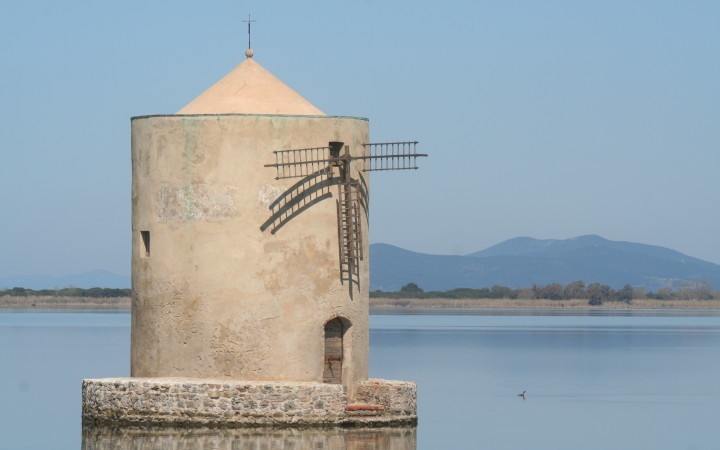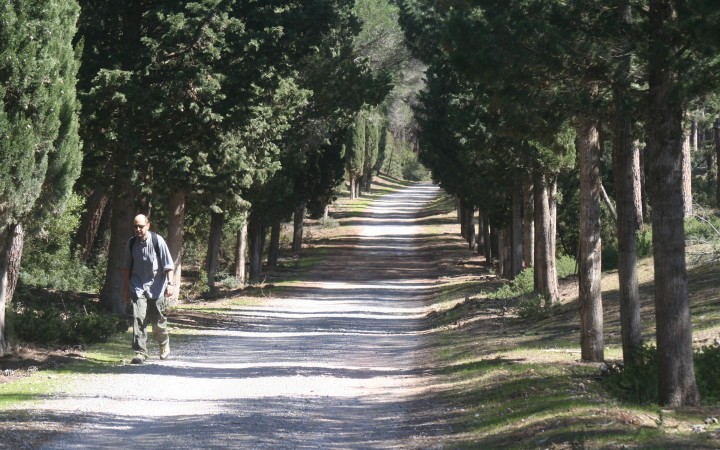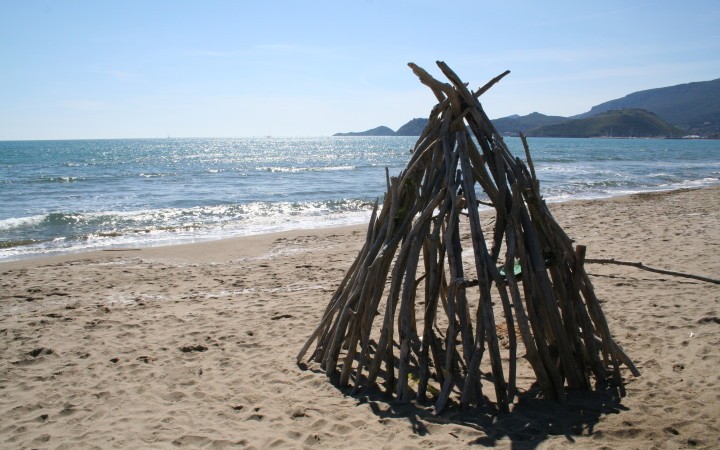Orbetello

Orbetello, the “City of Water”, is located on a strip of land connecting Monte Argentario with the mainland by an artificial bridge (the dam) that divides the water into two parts, the Laguna di Ponente on the west side and the Laguna di Levante on the east side of the dam. The two lagoons are limited towards the sea by two land barriers known by the Tuscan term tomboli (dunes) as Tombolo della Giannella to the north and Tombolo della Feniglia to the south, featuring long sandy beaches, pine woods, and the Mediterranean Scrub.
The coast near the Talamone and Ansedonia heights, instead, is rocky, with difficult access.
The town, along with Porto Ercole, Porto Santo Stefano, Ansedonia, and Telamon, was part of the Presidial State (Stato dei Presìdi), a little territorial entity with strong military power over the states and seas of central Italy.
The Presidial State was created by King Philip II of Spain in 1557 out of territories once belonging to the Republic of Siena after the latter had been annexed to the Grand Duchy of Tuscany. This explains why a high number of fortresses are located in this area.
Don’t miss the following attractions:
The Feniglia, a natural reserve of approximately 6 km, is crisscrossed with pathways that can be explored by bike or on foot and trail signs showing the way to the beach.
It has three types of landscape: one side overlooks the beach; another side has pine woods, holm oaks, cork oaks, flowering ashes, and laurel; and the other side has broadleaf trees and pine woods overlooking the Lagoon of Orbetello.
Deer can be easily seen and, occasionally, badgers, foxes, and stone martens are also encountered. In the lagoon, birds like grey herons, wild ducks, coots, green woodpeckers, turtledoves, blackbirds, nutcrackers, and cuckoos are quite common. The Feniglia is also the place where the famous painter Michelangelo Merisi, also known as Caravaggio, died of malaria in 1610. A tombstone was placed near the Ranger Department (Corpo Forestale), where his dead body was supposedly found.


The Windmill (Mulino a vento), surrounded by water, in front of the city, is the only windmill left out of nine built on the lagoon in the 16th century. In the past, water power was used to grind the wheat that was carried to the windmills by motorboats typical of the lagoon (barchini).
The Eastern Lagoon Air Force Base (Idroscalo), with hangars designed by Pier Luigi Nervi, became a legend of the Italian and international Air Force, although it was then destroyed in 1944 by the German army. General Italo Balbo organized and led aerial cruises and flights across the ocean from this air force base:
1928 – Western Mediterranean Cruise (Orbetello – Los Alcazares).
1929 – Eastern Mediterranean Cruise (Taranto – Odessa – Orbetello).
1930 – First Atlantic Cruise (Orbetello – Rio De Janeiro).
1933 – Second Atlantic Cruise (Orbetello – Chicago – New York – Rome).
The city of Cosa
Founded by the Romans in 272 BC, the city of Cosa stands on the rocky promontory of Ansedonia, connecting Monte Argentario with the mainland through the Tombolo di Feniglia.
It became a Byzantine fortress and a medieval castle under the name of Ansedonia, which gave its name to the place. Ruins and archaeological remains can be seen today. Open-air theater shows are a summer highlight.
For information on the Archaeological Museum of Cosa, please call (+39) 0564 881421. Summer Hours: 9am-7pm / Winter Hours: 9am-2pm.
The frontone of Talamone
Exhibited in the remodeled building in front of the Assumption Cathedral, the terracotta fragments belonged to the pediment (frontone) of an ancient Greek and Roman-Etruscan temple decorated with low-relief sculptures. The pediment is of great archaeological and historical interest and was found near Talamone. It illustrates episodes of the myth of The Seven Against Thebes, a Greek myth metaphorically representing the internal turmoil of Rome.
A sustainable place in the beautiful Maremma Tuscany.
We have created a place where you feel the attempt to get closer to harmony, to experience a different way of living, with full respect for the environment.